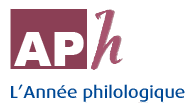Submissions
Submission Preparation Checklist
All submissions must meet the following requirements.
Mare Nostrum accepts original unpublished manuscripts. Contributions which are currently under consideration with other journals should not be sent. We also expect that you will not submit your manuscript elsewhere until you are informed of Mare Nostrum’s decision. For any particular question on this regard, please contact the editors first.
- Manuscripts should be submitted in Word, Open Office or RTF formats. If the manuscript contains citations in Greek or in any writing system other than the Roman, please also submit a PDF
- Inform URLs for web references when possible
For manuscript formatting, see “Author Guidelines” above.
Contributions should be typed in 12-point font, 1,5 spaced, on A4 standard size paper. Illustrations and tables should be included in the body of the text.
- Submissions are refereed anonymously. Contributors should send two files with one of them omitting their names and any other identifying information.
Copyright Notice
Responsibility for the content published by Mare Nostrum rests exclusively with the author(s) of such content.
The reproduction of the texts published by Mare Nostrum is licensed according to Creative Commons license Attribution-NonCommercial 4.0 International (CC BY-NC).
Authors who publish with this journal agree to the following terms:
- Authors retain copyright and grant the journal right of first publication with the work simultaneously licensed under a Creative Commons Attribution License that allows others to share the work with an acknowledgement of the work's authorship and initial publication in this journal.
- Authors are able to enter into separate, additional contractual arrangements for the non-exclusive distribution of the journal's published version of the work (e.g., post it to an institutional repository or publish it in a book), with an acknowledgement of its initial publication in this journal.
- Authors are permitted and encouraged to post their work online (e.g., in institutional repositories or on their website) prior to and during the submission process, as it can lead to productive exchanges, as well as earlier and greater citation of published work (See The Effect of Open Access).
Privacy Statement
The names and email addresses entered in this journal site will be used exclusively for the stated purposes of this journal and will not be available for other purposes or to third parties.








